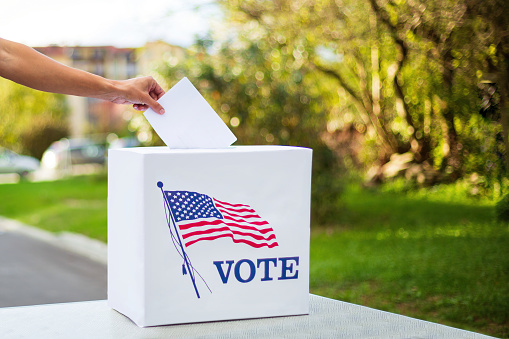The window for political candidates to file for local, state and national offices in the 2022 midterm election is from March 7 to 11.
CACHE COUNTY – The 2022 General Session of the 64th Utah Legislature has barely begun. But just days after that gathering of lawmakers ends, the political campaign season leading up to the 2022 midterm election will begin.
The 45-day legislative session will end on Friday, March 4. The official window for would-be candidates to file for local, state and national offices will open the following Monday (March 7) and close on Friday, March 11.
The end of the current legislative session will also mark the effective date of new district designations and boundaries established by the 20-member Utah Legislative Redistricting Committee in late 2021, according to Bryson Behm, Cache County’s deputy clerk.
“The Legislature renumbered all the state House and Senate districts during the redistricting process,” Behm explains. “While the current House and Senate districts remain the same for this year’s general session of the Legislature, the new numbers for voting districts will then go into effect for the upcoming election.”
The district designations for local Representatives Joel Ferry and Casey Snider will remain unchanged.
Until the November election, Ferry will continue to hold the District 1 seat in the Utah House. That district includes Box Elder County and parts of Cache County including the communities of Cornish, Clarkston and Newton.
Ideally, the Legislative Redistricting Committee intended to ensure that each voting district will have a population of 43,622 Utahns. District 1 has a population 43,137 as of the 2020 Census count.
The same is true for Snider in District 5 in the southern portion of Cache County, which includes the communities of Mendon, Providence, Wellsville, Hyrum, Paradise and Avon. District 5 has a population of 43,323.
A northern portion of Cache County that is now designed as House District 3 will become District 2 when new designations take effect in early March. Rep. Mike Petersen now represents voters in that area, including the communities of Lewiston, Richmond, Smithfield, Hyde Park and North Logan with a population of 43,829.
If Petersen chooses to run for reelection, he will be opposed by former state Rep. Val Potter who has already announced that he plans to try to reclaim his previous seat in the Legislature.
Rep. Dan Johnson’s seat in the Utah House will also change from District 4 to District 3 in March. That district will still be centered in Logan, with a population of 43,860 as of 2020.
In the Utah Senate, Sen. Scott Sandall’s seat has been redesignated from District 17 to District 1. Although the ideal proportional population for new Senate districts is 122,814, Sandall will represent 110,855 Utahns in the Senate until the midterm election.
Thus far, none of the aforementioned state elected officials have announced whether they intend to seek reelection in November.
Closer to home, a number of county officials are also up for reelection in November.
They include County Executive David Zook, who was appointed to that post in 2021; Clerk/Auditor Jess Bradfield, appointed in 2020; and County Attorney John Luthy, appointed in 2021.
Other county officials whose terms of office will expire this year are Sheriff Chad Jensen and county council members Paul Borup (Logan Seat 3), Gina Worthen (Northeast District) and Gordon Zilles (Southeast District).
Finally, U.S. Rep. Blake Moore (R-Utah Congressional District 1) is also facing the challenge of reelection in November.
Balloting in November will also decide membership on the Cache Water District; local school boards; the Utah State Board of Education; and whether judges will be retained on the benches in 1st District Court and the Utah Supreme Court.

